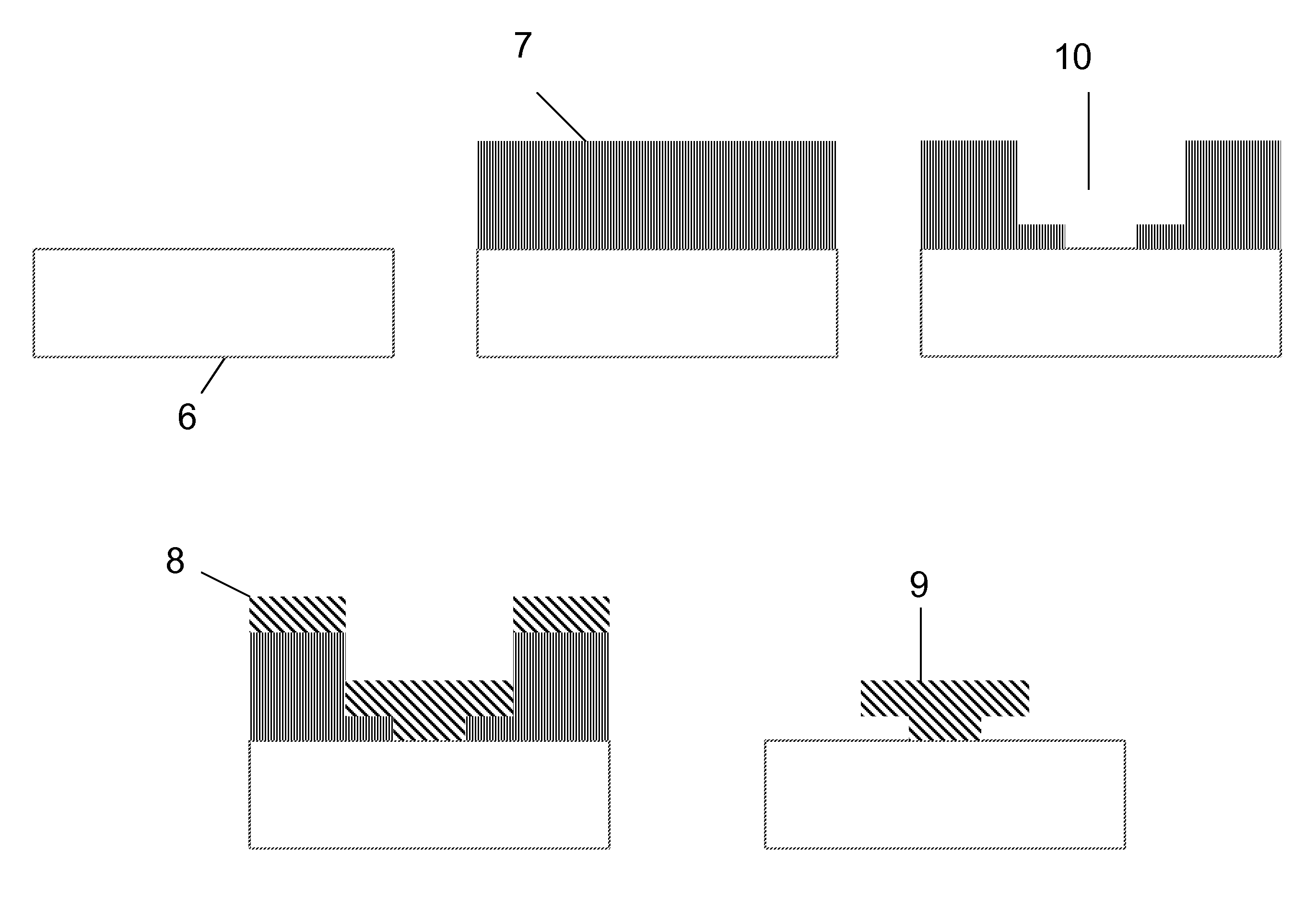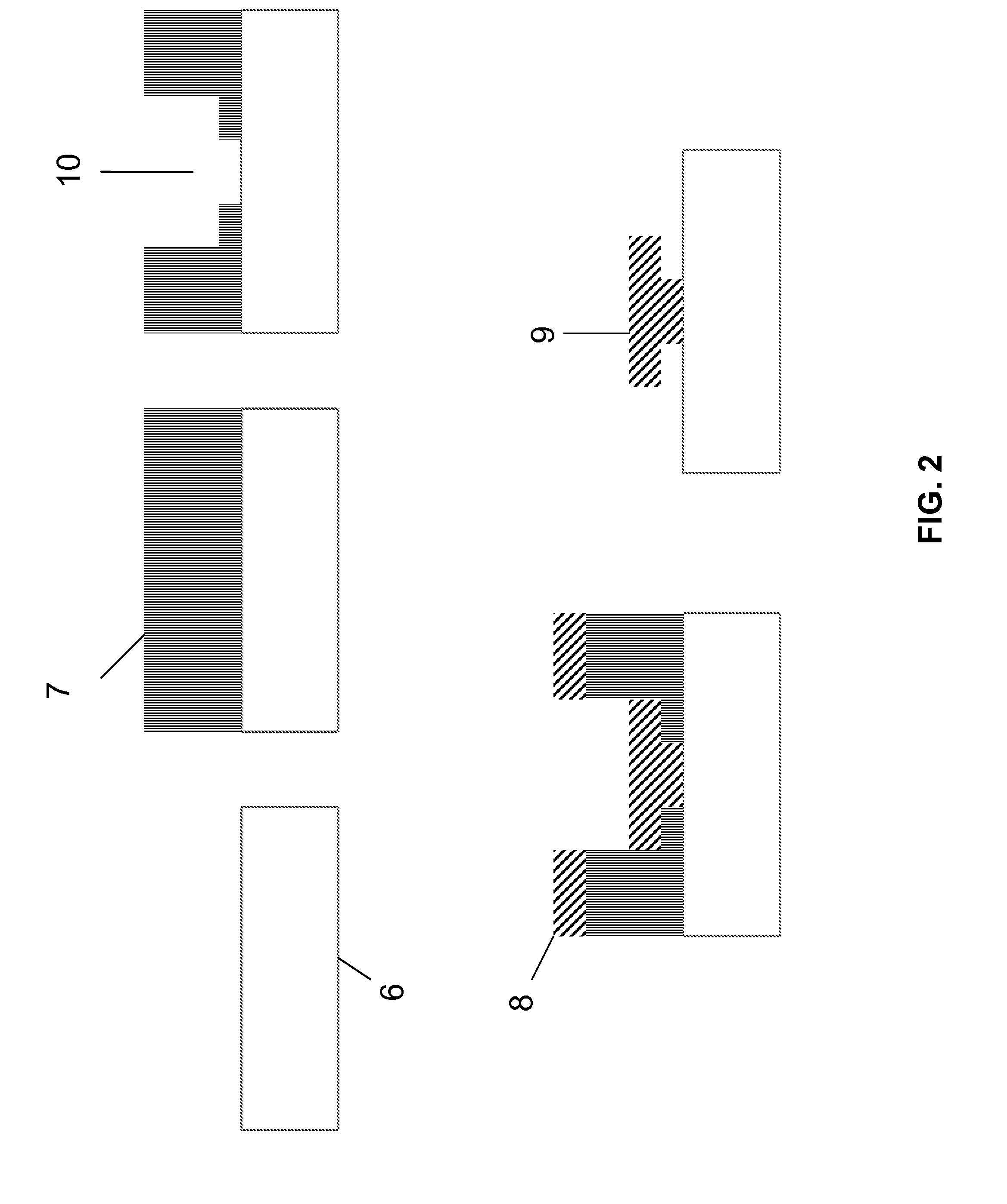Methods for fabricating complex micro and nanoscale structures and electronic devices and components made by the same
a technology of electronic devices and components, applied in photomechanical devices, instruments, nuclear engineering, etc., can solve the problems of increasing net processing costs at an exponential rate, impede the full integration of this technology, and use of multiple resists and multiple developers is very costly and laborious
- Summary
- Abstract
- Description
- Claims
- Application Information
AI Technical Summary
Benefits of technology
Problems solved by technology
Method used
Image
Examples
example 1
Fabrication of a T-Gate Structure for a HEMT Device
[0074]This example demonstrates the patterning a T-Gate structure which acts as the Schottky contact for a GaN / AlGaN HEMT structure using the methods of the present invention. The patterning of the gate is one of the most important steps for device performance and is usually patterned at the very end after the rest of the processing has been completed.
[0075]A 7000 Å layer of PMMA is spun on the substrate using certain spin speed and spin time. The substrate having the PMMA layer is exposed to an electron beam, which first writes a rectangle having a length of 150 nm at a dose of 50%. Another rectangle having a length of 150 nm is subsequently written such that it partially overlaps the first rectangle. The second rectangle is written with a 50% dose and covers half the area of the first rectangle. The sample is developed in MIBK: IPA (1:3). The exposed regions dissolve in the developer. About 250 Å of Nickel and 3000 Å of Gold are d...
PUM
 Login to View More
Login to View More Abstract
Description
Claims
Application Information
 Login to View More
Login to View More - R&D
- Intellectual Property
- Life Sciences
- Materials
- Tech Scout
- Unparalleled Data Quality
- Higher Quality Content
- 60% Fewer Hallucinations
Browse by: Latest US Patents, China's latest patents, Technical Efficacy Thesaurus, Application Domain, Technology Topic, Popular Technical Reports.
© 2025 PatSnap. All rights reserved.Legal|Privacy policy|Modern Slavery Act Transparency Statement|Sitemap|About US| Contact US: help@patsnap.com



